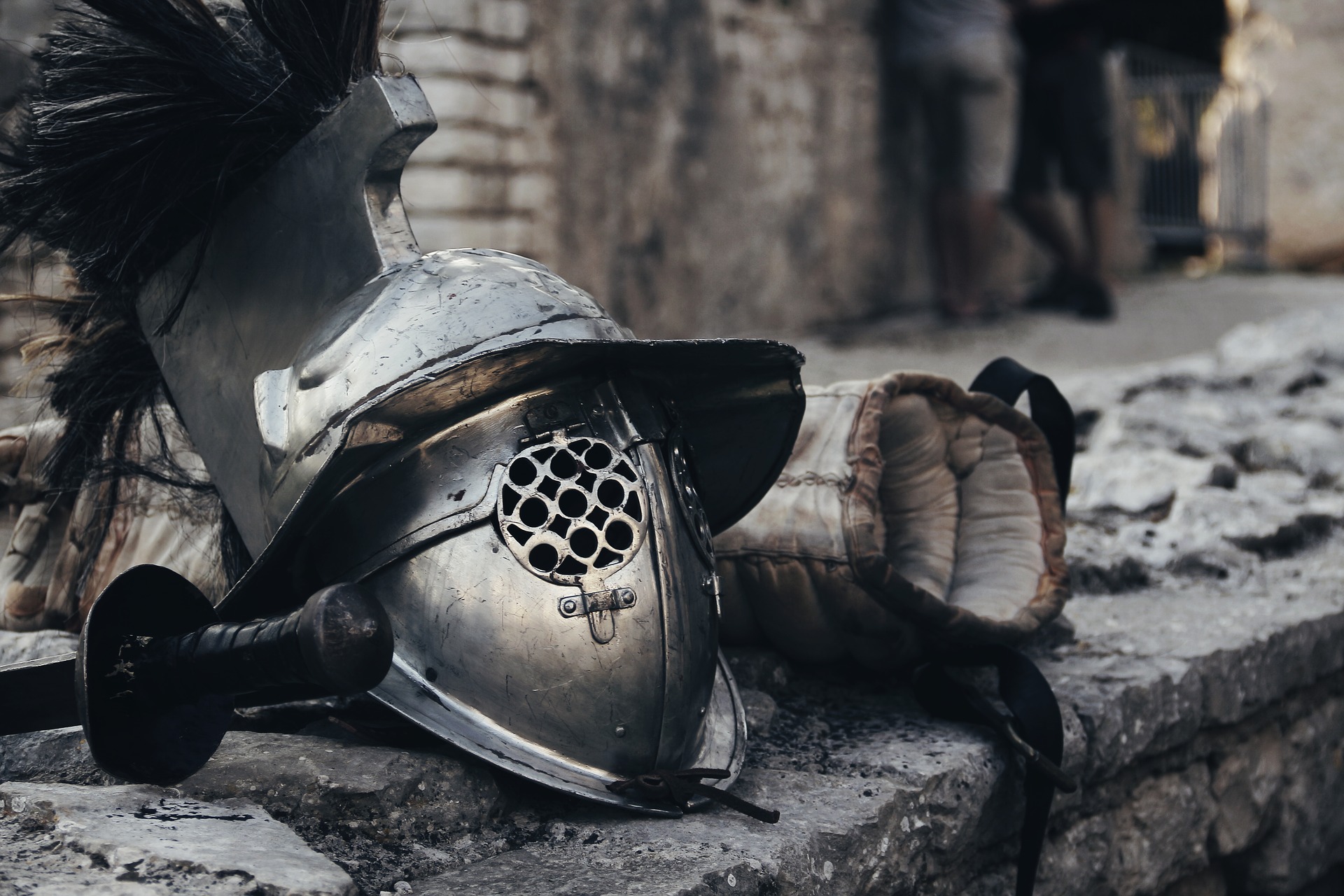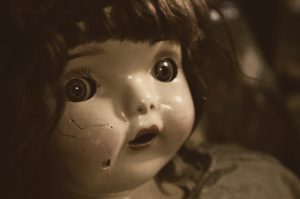Well-written villains have a magic that makes a story pop. Despite this, some writers have trouble getting into their villains’ heads, and many readers and viewers fail to fully understand the villains they encounter in books, films, and video games. It’s unfortunate, because understanding how villains think opens up new worlds in the works you read and write.
To that end, we spent our last blog post exploring the three most common motivations and methods of thought for villains: a tendency to see oneself as the hero, a tendency to justify your actions, and a bad habit of acting thoughtlessly.
Of course, that’s not all there is to “bad guys.” There’s one other major kind of villain we didn’t cover in that previous article: sociopaths. On top of that, understanding how villains think allows us to ask a deeper, more important question: what separates a flawed, complex hero from a villain? Here, we’ll spend some time exploring sociopaths, with special attention paid to what makes them so difficult to write well, and how some famous examples have overcome that hurdle. After, we’ll tackle the line between hero and villain.
Sociopaths
Sociopaths are, in well-written works, the closest you’ll find to “true evil.” But, at the same time, I would also argue that they’re the hardest to write in any believable way.
Sociopathic villains are not those who twirl their moustaches and tie damsels to train tracks, nor do they lack any semblance of a moral compass and rant about their plans for global domination. Rather, a key part of sociopathic villains is that they do have a moral compass… it’s just horribly twisted.
From what I’ve seen in fiction, well-written sociopaths fall into one of two camps. The first are those that view morality as relative to their wants. They will complain about the injustice of any perceived slight to them—even if it’s just denying them a new toy—while treating other people as objects for their amusement, devoid of any agency. They’re capable of torturing someone to death for fun, while claiming the person deserved it for spitting at their feet. Joffrey Baratheon, in Game of Thrones, has these qualities in spades. Morals exist, for these people… but what’s “right” is whatever gets them what they want.
The second camp of sociopaths recognize social moral norms… but are actively antagonistic towards them. That’s a subtle distinction, but an important one. These kinds of baddies aren’t neglecting “the rules” to serve a greater end; they’re attacking the norms, themselves. Sometimes this is to horrify others, or for their own amusement, or to drag the rest of the world down to their level of cynicism. If you want an example of this kind of villain, look no further than the Batman universe. The Joker in both the comics and the film The Dark Knight exemplified this mentality.
Done well, these kinds of villains are equal parts infuriating and bone chilling. They act against everything we hold sacred, seeming to stomp on the rules that rule our day-to-day lives. Worse yet, they make us doubt those rules while shattering our trust in other people. After all, if this person can be so “evil…” what’s to say there aren’t more?
Problem is, it’s extremely hard to write good sociopaths. This isn’t just because that sort of mindset is so out-there for most people, but because it’s very easy to slip and turn the villain into a one-dimensional antagonist. These villains are as close to “evil” as you’ll find and without really getting into their point-of-view, it can be tough to deftly weave in the subtleties that set them apart from their one-dimensional, moustache-twirling counterparts. To some degree, this is because these people are one-dimensional.
But, both Batman and Game of Thrones found a way around that: they included a wider cast of believable, well-rounded villains who served as a counterpoint to the sociopath. As a result, readers/viewers were conditioned to look for reasonable, believable, human villains… only to be confronted with a sharp contrast in someone who seems downright evil. With the more textured world and cast as a backdrop, the horror of these sociopaths comes through in full color.
Gray Areas and Flawed Heroes
After reading some of these modes of thought, I imagine you can think of at least a few protagonists and heroes who, occasionally, fall into them. Going back to Game of Thrones, Tyrion Lannister is guilty of three out of the four at least once, but remains the most morally steadfast member of his family. So, obviously, not all characters who think like this are “villains.”
The fact of the matter is that everyone falls into these at some point or another. We all make mistakes, we all get selfish or vengeful or convinced of our moral point of view, and we do something wrong. This doesn’t make us villains. It makes us human. Humans are flawed, and the motivations that lead the best of us to make mistakes aren’t that different from those that motivate the villains in our lives.
The same should also be true of our characters if we want to create a well-rounded cast. Protagonists who always make the right choice and are as morally clean as a freshly laundered bed sheet are about as interesting as one. Flaws give us something human to relate to, make characters believable, and serve as personal obstacles in their growth. Even a character as morally upright as Aang from Avatar: The Last Airbender has his flaws. He panicked and ran away from the monks and loses his temper about once a season. Luke Skywalker in Star Wars was under threat of slipping into the dark side as his father did, and the cast of Game of Thrones is rife with bad decision-making.
So, where do we draw the line between flawed hero and villain? Perspective is obviously important, and what we choose to tell readers (and what writers choose to tell us) has a huge effect on where each character sits. But, what if we put perspective aside? What then?
Is it a matter of quantity and consistency, determined by whether the character makes the moral decision more often than not? If so, then where do we place characters like Watchmen’s Adrian Veidt, who has a long list of great works… but also made a single choice to kill two million people “for the good of humanity?”
Maybe it’s about how far they’re willing to take their convictions? But, then, what do we do about “wishy-washy” villains who vacillate between good and bad but, somehow, seem to still settle comfortably into the darker side of the cast, often as a bumbling sidekick?
Remorse seems like a promising candidate. While villains who feel “justified” recognize that what they’re doing is wrong, they’re not always remorseful about their actions. On the other hand, characters like Tyrion, when they make the wrong choice, will beat themselves up for a season and a half. As heroic as this remorse seems, I think it’s just a pointer to the closest answer we’ll be able to find.
I would argue that what makes villains different from flawed heroes, in this context, is where they place their priorities. For villains, their first priority is themselves. Even those that believe they’re doing what’s right are focused on their perspective, their crew, and their needs. Heroes, on the other hand, tend to give strong consideration to the other people around them… even strangers. Aang, as mentioned above, ran away from the monks because he wasn’t sure he could handle the responsibility of carrying the world on his shoulders. It was a bad move, but one motivated by concern for others. In some extremes, this divide between egocentric and other-centric can lead towards or away from the motivations listed above or keep someone from falling into those mental traps by making them consider the perspectives of other people.
That isn’t to say there aren’t cunning villains who think about other people and understand their perspectives… but to those villains, that understanding is a tool to get them what they want. They don’t care about the well being of those other people, and they’re still locked inside their own ego.
There are exceptions to this, of course. Veidt, as mentioned above, was primarily interested in the well-being of other people, and only his methods and limited foresight displayed his egocentricity. Nevertheless, this idea—egocentricity versus other-centricity—can help serve as a conceptual guideline for where a character falls on a moral spectrum.
As for the kinds of villains listed above, each of the four comes in too many shades to count, and I encourage people to play with these ideas and try to come up with something new, and to give another look to the villains in their favorite series to see what patterns they can find amongst the cast. But, so long as you remember that villains are rarely “evil,” it should help you think your way into their heads and make them compelling and convincing.
Featured image courtesy of ArtCoreStudios!



